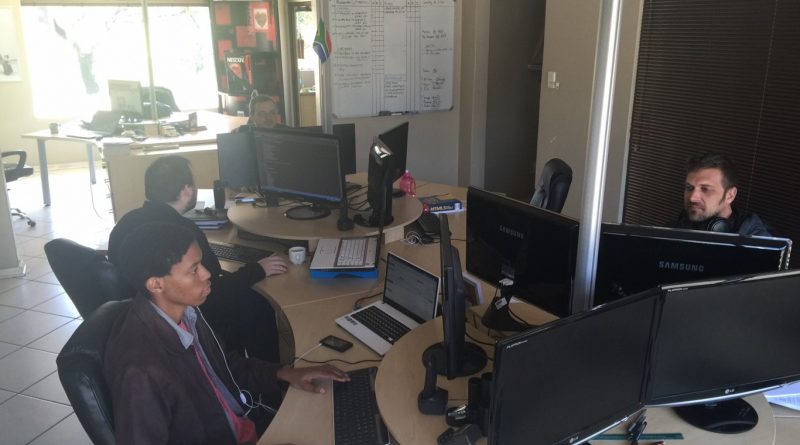Four common office recycling mistakes

It is estimated that only 8% of businesses recycle their used paper and board. And even the most well-intentioned recyclers make mistakes.
The Paper Recycling Association of South Africa (PRASA) outlines some of the more common recycling blunders with some helpful tips to make sure that paper and board get to where they need to be: to recycling companies in a good, clean state so they can be reprocessed and made into new paper products.
Mistake 1: Putting non-recyclable paper products into the recycling bin
Even though they are made of paper, a number of items are not suitable for recycling: dirty paper plates, cigarette butts, tissue and toilet paper, paper towel, sticky notes, carbon paper, foil-lined, wax-coated and laminated papers, cement and dog food bags.
These items cannot be recycled owing to the contamination or non-recyclability of certain elements or ‘stickies’ like waxes, foils, laminates and glues.
How to correct this:
• Educate your employees around what is recyclable and what is not.
• Use printable material and posters available on www.recyclepaper.co.za for office communal areas.

Mistake 2: Food contamination
Wet waste ends up in the paper recycling bin – this includes used food waste, cigarette butts and soiled take-away containers. This contaminates the paper and reduces its value. Paper also starts to degrade once wet.
How to correct this:
• Set-up a two-bin system – receptacles for paper recycling and bins for food, liquid and non-recyclable waste with clear and simple messaging and graphics.
• Contact one of PRASA’s members about paper recycling boxes: Mpact Recycling, Sappi ReFibre and Neopak Recycling.
Mistake 3: Making it difficult and time-consuming for employees to recycle
We are all human. Nobody likes to walk too far to throw something away.
How to correct this:
• Ensure that each desk is equipped with a tray or office recycler solely for paper and board.
• Install paper recycling receptacles in key locations:
o At each desk
o At each printing/copying station
o In meeting and break rooms, and kitchen areas
o In reception
• For every paper recycling bin, there should be a general waste bin alongside it.
A study showed that paper recycling rose from 28% with one bin per office to 94% when paper trays were located on desks .
Mistake 4: Not knowing what to do with your recyclables
Your office has collected all this paper that it doesn’t know what to do with, and after a while, it all ends up in the general rubbish.
How to correct these mistakes:
• Involve cleaning teams in your recycling initiatives. If waste streams are mixed, the recyclable paper will be contaminated and become worthless – this renders the recycling programme fruitless.
• Assign a sheltered area in which to keep recycled paper clean and dry.
• Where possible, keep office paper (mainly white bond paper) separate from newspapers and magazines and cardboard boxes.
• Partner with a recycling collection agent that meets your needs – this could be a service offered by a big company, a smaller business or an informal collector who can benefit from your paper collection.
• Visit www.mywaste.co.za for collection programmes or buy-back centres in your area.
• Support a local school or charity’s recycling fundraising initiatives (e.g. the Ronnie Recycler programme) as your recyclable paper could boost the tonnages they collect and increase the funds raised.
• Visit www.recyclepaper.co.za for a list of its members.
Other ways to boost your company’s recycling efforts
• Appoint a recycling champion who is able to drive and monitor the programme.
• Regular communication is key – posters at all ‘points of disposal’, emails/printed memos, newsletters, agenda item in meetings
• Showcase the successes and volumes of paper recycled to demonstrate the programme’s effectiveness.
• Ensure that cleaning teams are trained and incentivised to maintain the programme. Include and thank them in the communications.
• Paper collectors will only service offices where there is sufficient volume to warrant their transportation costs. It makes sense in a larger office park to centralise the collection area so that larger quantities are accumulated faster. Engage the facility manager in this case.
• Make sure your visitors, customers and suppliers and clients are aware of your recycling efforts through regular communication and clear signage.
• Staff can also be encouraged to bring waste paper from home if the storage area is big enough.
Know the benefits of recycling
Every business likes to be better at reducing its environmental footprint. Knowing and sharing the benefits of your paper recycling efforts will help each person strive to do more.
1. Diversion of valuable raw material from landfill – A tonne of recycled paper can save up to three cubic metres of landfill space and is used to make new paper products that we use every day.
2. Cleaner air – Paper buried in a landfill after mixing with other waste will degrade and release gases such as methane, which is 25 times more potent than carbon dioxide.
3. Job creation – Big and small companies as well as informal collectors make money (and employ people) through the recovery and processing of clean, quality recyclable paper.
4. Feel-good factor – Staff feel more environmentally aware and responsible. Businesses who recycle and embrace a ‘green mandate’ have shown an increased ability to recruit and retain good employees. *
5. It’s the right thing to do.
With a paper recovery rate of 64%, South Africa has been trending upwards towards a goal of 70% by 2020 for past few years.




